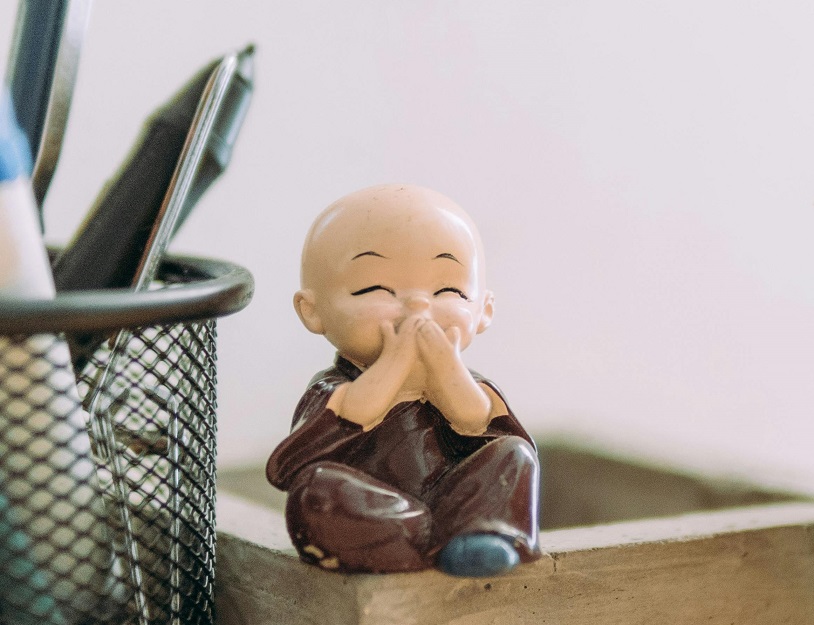These kinds of posts will be part of a Mindful Monday series where we look at mental health and stress management. If you find these helpful, let me know! ~Bryn
Introduction
Feeling like there’s never enough time in the day? You’re not alone. Studies show that 83% of professionals experience work-related stress, but there’s a powerful antidote: mindfulness. Even in the busiest schedules, mindfulness offers a way to stay calm, focused, and productive. In this guide, we’ll explore how mindfulness can fit seamlessly into a professional’s hectic lifestyle and provide practical strategies for cultivating calm amid chaos. Let’s unlock your inner balance!
Table of Contents
What is Mindfulness?
Mindfulness is the practice of intentionally focusing your attention on the present moment with a sense of curiosity and without judgment. Rooted in ancient traditions, it has gained significant attention in modern science for its profound impact on mental and physical well-being. Research shows that mindfulness can reduce cortisol levels—the body’s primary stress hormone—while enhancing brain functions like attention, memory, and emotional regulation. Studies using MRI scans even reveal that regular mindfulness practice can increase gray matter density in areas of the brain associated with learning and emotional resilience. In essence, mindfulness offers a practical and scientifically supported way to cultivate clarity, calmness, and balance in our busy lives.
Why Mindfulness Is Essential for Busy Professionals
The Science Behind Mindfulness and Stress Management
Mindfulness works wonders on stress by helping you manage your response to challenging situations. It lowers cortisol levels, the hormone responsible for stress, and promotes a sense of calm even during chaotic moments. For professionals, this means staying level-headed and making better decisions under pressure.
Mindfulness Improves Focus and Decision-Making
Mindfulness sharpens your focus by training your mind to stay present. Instead of getting caught up in distractions or overthinking, you can channel your energy into the task at hand. This clarity leads to smarter, more deliberate decisions, even in high-stakes scenarios.
Benefits of Mindfulness for Maintaining Work-Life Balance
For busy professionals, it’s easy for work to spill into personal life. Mindfulness helps create boundaries by teaching you to be fully present at work and fully engaged at home. This balance not only reduces burnout but also enhances your overall quality of life.
Simple Mindfulness Practices for Busy Schedules
5-Minute Mindfulness Exercises for the Workplace
Even the busiest schedules have room for a five-minute break. A quick breathing exercise—inhale for four counts, hold for four, exhale for four—can instantly calm your mind. These short practices are like hitting a mental reset button in the middle of a hectic day.
Mindful Breathing Techniques During Stressful Meetings
When meetings get tense, mindful breathing can help you stay grounded. Focus on the sensation of your breath entering and leaving your body, which keeps you calm and prevents reactive outbursts. This simple habit can transform how you handle workplace stress.
How to Practice Mindfulness While Commuting
Your commute can be a surprising opportunity for mindfulness. Instead of scrolling your phone, notice the sights, sounds, and sensations around you. Whether you’re walking, driving, or on public transport, this practice turns mundane travel into a calming experience.
The Role of Mindfulness Breaks in Boosting Productivity
Mindfulness breaks don’t take time away—they give you energy to do more. Pausing for a few moments of deep breathing or quiet reflection improves your focus and prevents mental fatigue. A quick mindful break can make the rest of your day more productive.
Tools and Apps to Support Mindfulness at Work
Top Mindfulness Apps for Professionals
Apps like Calm, Headspace, and Insight Timer are designed with busy people in mind. They offer guided meditations that fit into your schedule, from 3-minute stress relief sessions to longer mindfulness exercises. These apps make it easy to stay consistent.
Using Timers and Reminders to Integrate Mindfulness
Sometimes, all you need is a little nudge. Set alarms or reminders to take short mindfulness breaks throughout the day. These cues help you stay committed, even when work gets overwhelming.
Wearable Technology for Mindfulness Habits
Wearables like smartwatches are great for tracking mindfulness habits. Some devices even have built-in reminders for breathing exercises or stress monitoring. They’re a practical way to keep mindfulness top of mind.
Incorporating Mindfulness into Your Workday
Starting Your Day with a Mindful Morning Routine
How you begin your day sets the tone for everything that follows. Spend a few minutes each morning practicing gratitude, breathing deeply, or simply sitting in silence. A mindful start can make you feel more prepared and focused.
Taking Mindful Pauses Between Tasks
Before diving into your next task, pause for a moment. Close your eyes, take a deep breath, and let go of lingering thoughts. This simple ritual helps you transition smoothly between responsibilities.
Practicing Mindfulness in Conversations and Meetings
Active listening is a powerful form of mindfulness. Pay full attention to what others are saying without planning your response ahead of time. This approach not only improves communication but also fosters stronger professional relationships.
Using Mindfulness to Transition from Work to Personal Time
At the end of your workday, take a moment to decompress. Use mindfulness techniques to mentally “clock out” and shift your focus to personal time. This boundary helps you recharge and avoid burnout.
Overcoming Challenges Staying Mindful at Work
Dealing with Distractions in a Busy Environment
Workplaces are full of distractions, but mindfulness helps you manage them. Instead of fighting interruptions, acknowledge them without judgment and return your focus to the present moment. This approach reduces frustration and improves concentration.
Tips for Staying Consistent with Mindfulness Practices
Consistency is key to making mindfulness a habit. Start small, like practicing mindfulness for just one minute a day, and gradually increase your time. Setting realistic goals ensures you stay motivated without feeling overwhelmed.
How to Manage Skepticism About Mindfulness in the Workplace
If mindfulness feels out of place at work, focus on its practical benefits, like improved focus and stress management. Share resources or success stories with colleagues to make it more approachable. Remember, mindfulness is for everyone, not just yoga enthusiasts.
Leveraging Mindfulness to Handle High-Pressure Situations
When stress peaks, mindfulness becomes your superpower. Techniques like mindful breathing or a quick body scan can help you stay calm and centered. This clarity allows you to respond thoughtfully, not react impulsively, even in high-stakes moments.
Summing it Up
Stress may be an inevitable part of life, but mindfulness gives you the tools to manage it effectively. From simple breathing exercises to consistent daily practices, mindfulness can transform how you respond to life’s challenges. Start small, stay consistent, and watch the ripple effects on your well-being. Are you ready to make mindfulness your go-to strategy for stress relief? Start today and feel the difference!







